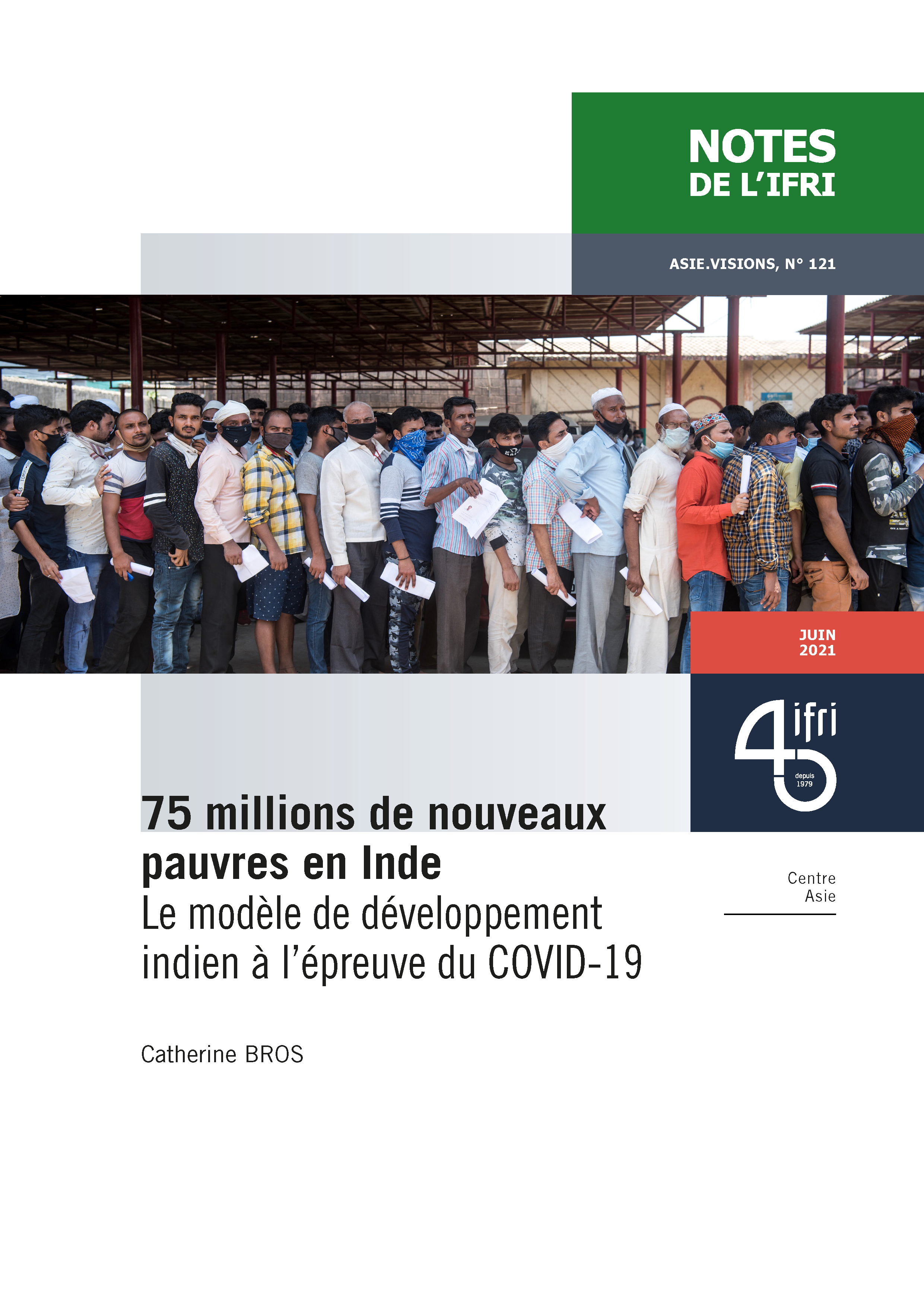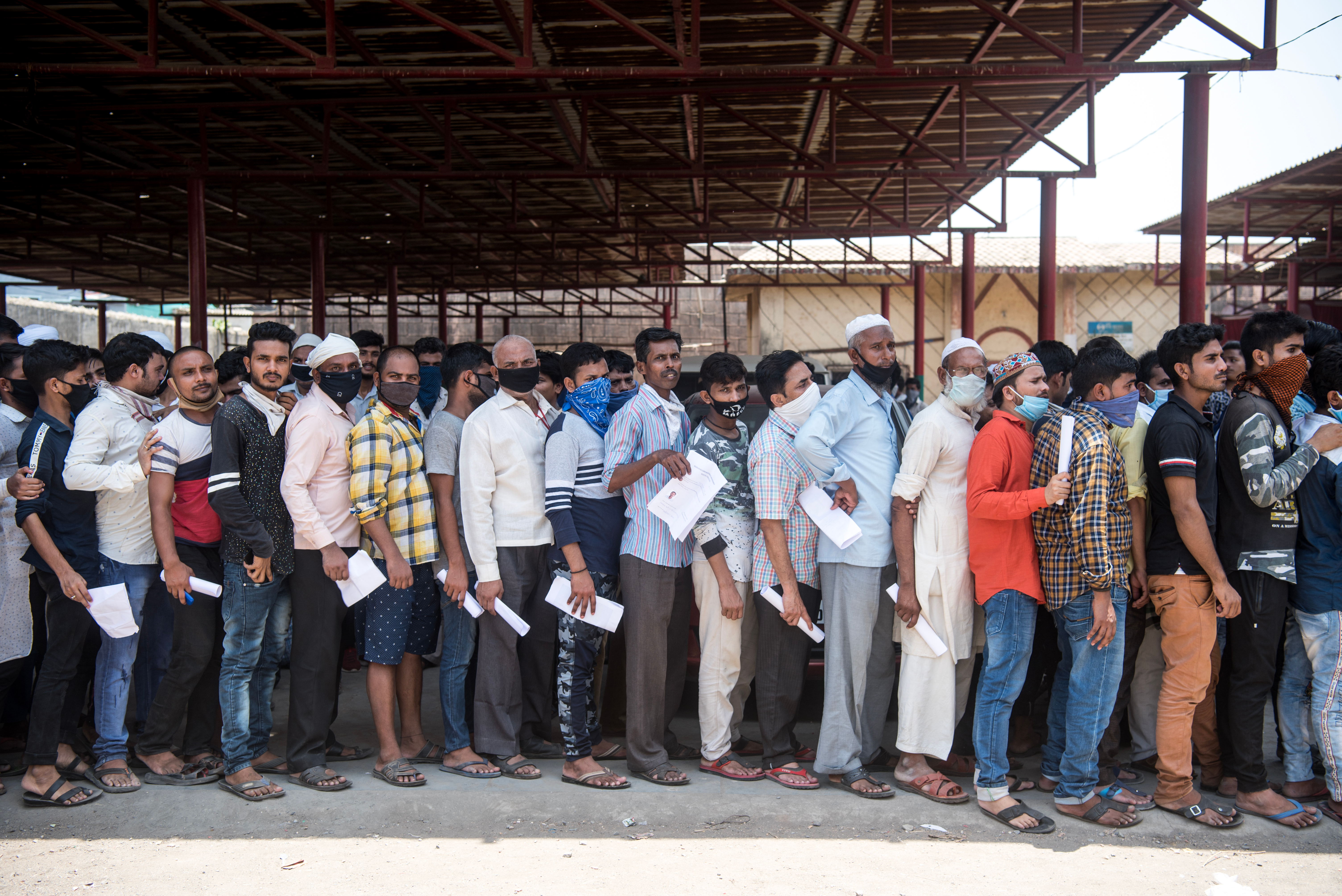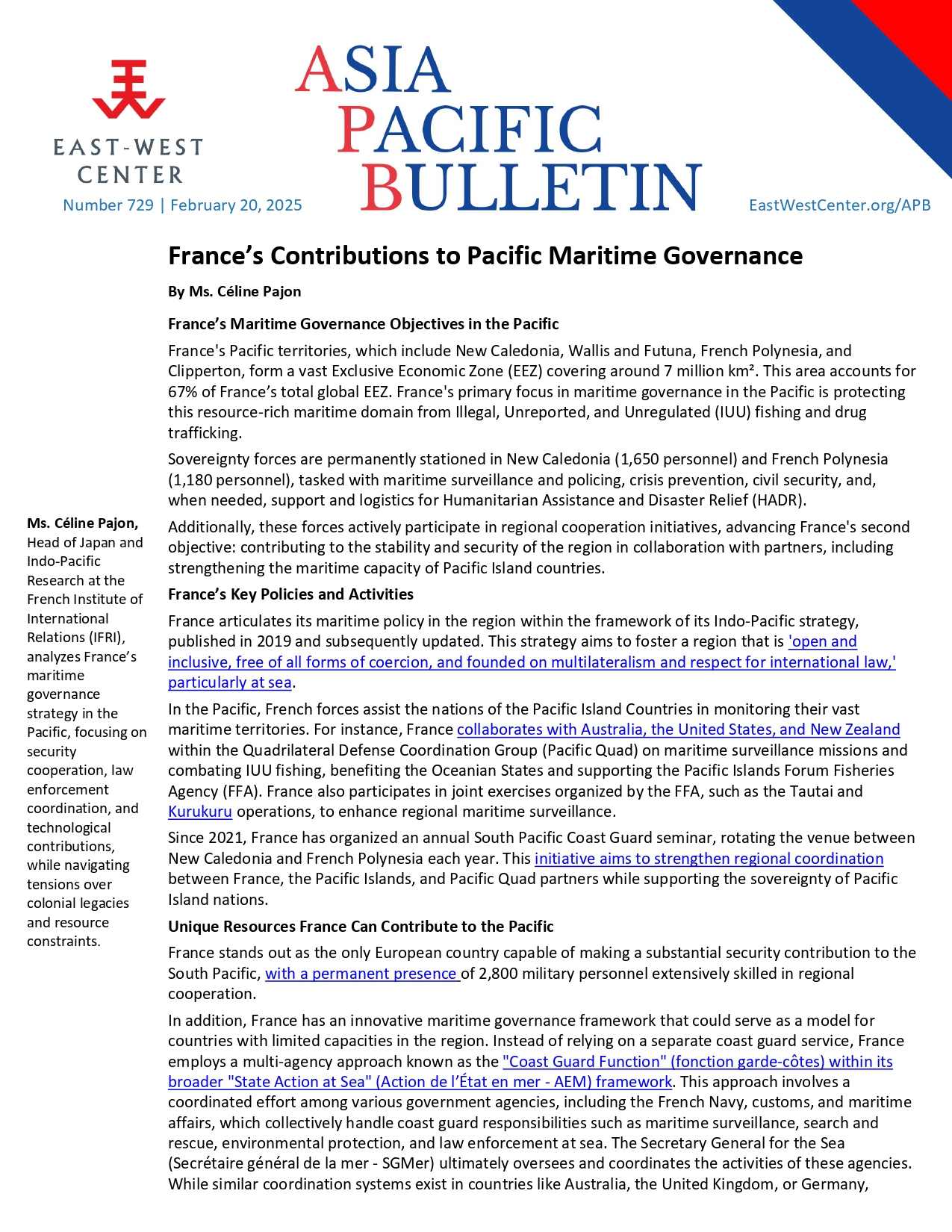75 millions de nouveaux pauvres en Inde: le modèle de développement indien à l’épreuve du COVID-19

The pandemic has revealed the fragility of the Indian economy.

In March 2020, the Indian government implemented one of the most stringent lockdowns in the world in response to the global spread of the COVID-19. Economic activity was put on hold for more than two months, depriving of their livelihoods more than three fourths of the population that do not benefit from any form of social protection. We estimate that income losses due to the lockdown pushed 75 million individuals back into poverty which is a major setback given that the high and sustained growth of the last twenty years, 6% per annum on average, succeeded in reducing the number of poor by 248 million.
COVID-19 unveiled the fragility of the Indian economy, whose growth has been mainly driven by skill-intensive sectors that have not managed to absorb the large number of new entrants on the labor market, while manufacturing has remained under-developed for historical reasons. The inter-sectoral transfer of labor has been hampered by the constraints on the industrial sector whose size is abnormally small for such a large economy. Most of the population still lives on agriculture that only contributes to 16% of the value-added. Moreover, a large set of constraining regulations, particularly on labor, encouraged production units to remain small and, more often than not, family-based: more than half of the labor force is either self-employed or work in the family business while only 10% work as regular wage employees. The workforce is therefore greatly exposed to shocks and can hardly rely on safety nets.
In June 2020, Narendra Modi announced the release of an economic stimulus package that aims more at pursuing the Make in India industrial strategy set up in 2014 than cushioning the effects of the lockdown. The objective of the Atmanirbhar Bharat (Self-Reliant India) is to foster India’s integration into world commercial exchanges, while protecting its internal market, although future trends in global trade remain uncertain as some countries may be inclined to resort to protectionism as well. In any event, India’s short term growth prospects rely heavily on its internal demand that had already shown signs of weaknesses in 2019, leading to worse than anticipated growth rates. The increase in poverty due to the lockdown will weigh heavily on India’s capacity to restore strong sustainable growth.
The full text of this paper is only available in French: 75 millions de nouveaux pauvres en Inde : le modèle de développement indien à l’épreuve du COVID-19
Related centers and programs
Discover our other research centers and programsFind out more
Discover all our analysesJammu and Kashmir in the Aftermath of August 2019
The abrogation of Article 370, which granted special status to the state of Jammu and Kashmir (J&K), has been on the agenda of the Bharatiya Janata Party (BJP) for many decades.

France’s Contributions to Pacific Maritime Governance
France stands out as the only European country capable of making a substantial security contribution to the South Pacific, with a permanent presence of 2,800 military personnel extensively skilled in regional cooperation.
Unlocking India’s Energy Transition: Addressing Grid Flexibility Challenges and Solutions
India is rapidly scaling up its renewable energy (RE) capacity, adding 15–20 GW annually, but the ambitious goal of 500 GW of non-fossil capacity by 2030 is at risk unless the pace accelerates.

The China-Russia Partnership and the Ukraine War: Aligned but not allied
China and Russia maintain a strategic partnership rooted in shared opposition to the U.S. and liberal democracies, but their relationship is shaped more by pragmatism than trust.









